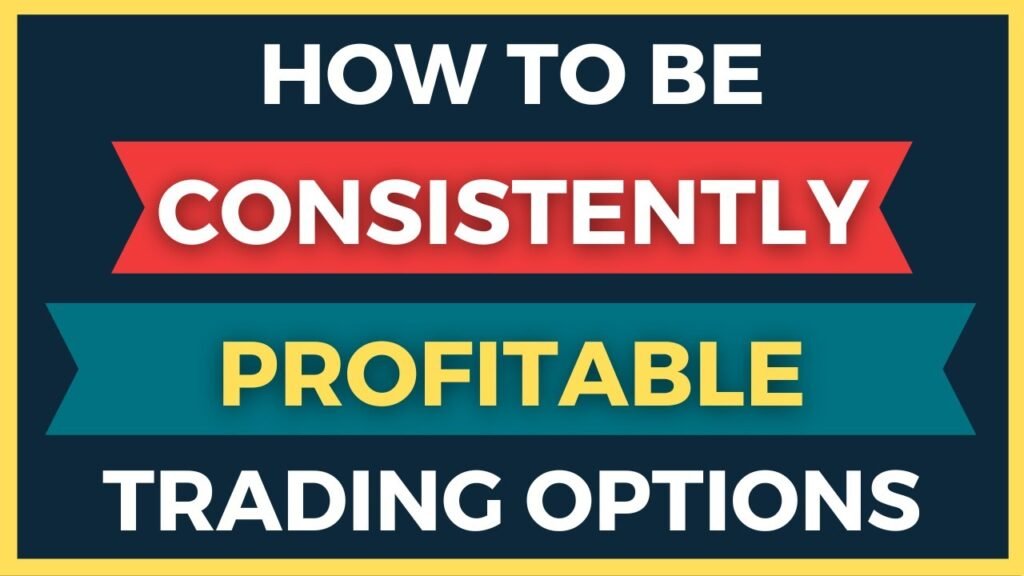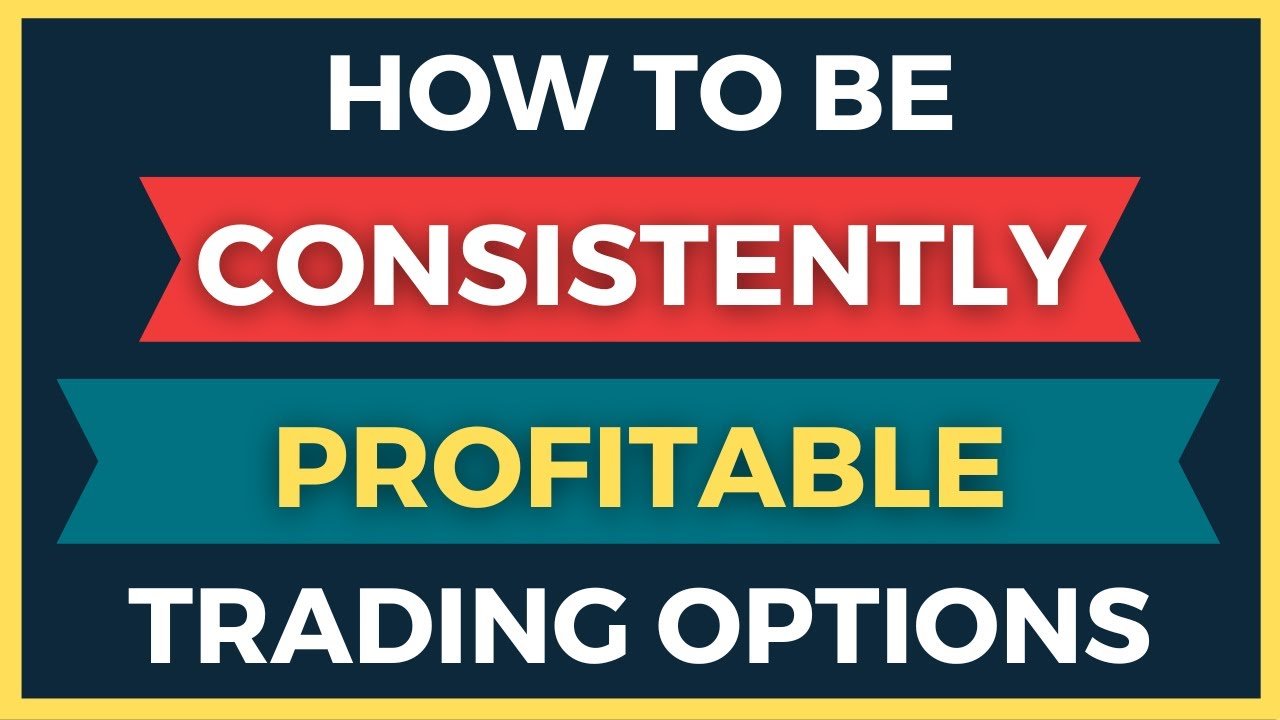In the video titled “How To Be Consistently Profitable Trading Options” by Options with Davis, you will learn the 4 key elements needed to become consistently profitable in trading options. This video provides timestamps for each of these key elements, allowing you to easily navigate to the specific topics that interest you. Additionally, the video suggests that there are other related videos that you may find helpful. Some key points discussed in the video include the higher probability of profit when selling premium compared to buying premium, the advantage of time decay when selling premium, the consistency in profits that can be achieved by trading index ETFs instead of individual stocks, and the importance of spreading out your trades to minimize volatility in your profit/loss. If you’re struggling to generate a consistent income trading options, this video is a must-watch.
Now, let’s dive into the main question: how can you be consistently profitable trading options? Options with Davis breaks it down into four key elements in this video. The first element is selling premium instead of buying premium, as selling premium has a higher probability of profit. The second element discusses the advantage of time decay when selling premium. The third element focuses on trading index ETFs for more consistent profits. Finally, the fourth element emphasizes the importance of spreading out your trades by using different deltas, durations, and strike prices to minimize volatility in your profit/loss. This video provides valuable insights and strategies to help you achieve consistent profitability in options trading.

Key Elements to Be Consistently Profitable in Trading Options
Introduction
In the world of options trading, being consistently profitable is the ultimate goal. But achieving this level of success requires a careful understanding of key elements that can make or break your trading strategy. In this article, we will explore four crucial elements that can help you become consistently profitable in trading options.
Element 1: Selling Premium vs Buying Premium
When it comes to options trading, there are two sides you can take: selling premium or buying premium. Selling premium involves taking the position of the option writer, while buying premium means taking the position of the option buyer.
The key difference between selling and buying premium lies in the probability of profit. Selling premium typically has a higher probability of profit compared to buying premium. This is because when you sell options, you receive premium upfront, and as long as the option expires out of the money, you get to keep the premium as profit.
On the other hand, buying premium comes with a higher risk. If the option expires out of the money, you lose the premium you paid to buy the option. However, buying premium does offer the potential for higher rewards if the option expires in the money.
To put it simply, selling premium provides a more consistent and reliable way to generate profits in options trading compared to buying premium.
Element 2: Time Decay
One of the key factors that work in your favor when selling premium is time decay. Time decay refers to the gradual reduction in the value of options as they approach their expiration date. This means that as time passes, the value of the option decreases, which can benefit you as the option seller.
When you sell premium, you essentially profit from this time decay. As long as the underlying stock or index remains within a certain range, the option you sold will lose value over time, allowing you to keep the premium as profit.
Time decay is especially beneficial when you implement strategies with shorter durations, such as selling weekly or monthly options. By consistently selling options with shorter expiration dates, you can take advantage of the accelerated time decay and enhance your profitability.
Element 3: Trading Index ETFs
Another key element to consider for consistent profitability in options trading is trading index ETFs (Exchange-Traded Funds) instead of individual stocks. Index ETFs are investment funds that track a particular index, such as the S&P 500 or the NASDAQ.
Trading index ETFs offers several advantages over trading individual stocks. Firstly, index ETFs provide more consistency in profits compared to individual stocks, as they are less prone to extreme price fluctuations. This can help you avoid sudden losses and maintain a more stable trading performance.
Additionally, index ETFs tend to exhibit lower risk and volatility compared to individual stocks. This is because the performance of an index ETF is determined by the collective performance of the underlying stocks within the index, which helps to diversify and mitigate risk.
When selecting index ETFs to trade, it is important to consider factors such as liquidity, volatility, and correlation to the overall market. Choosing the right index ETFs that align with your trading strategy and risk tolerance can significantly enhance your chances of consistent profitability.
Element 4: Spreading Out Trades
To minimize volatility in your profit and loss and increase your chances of consistent profitability, it is crucial to spread out your trades across different options. This involves utilizing different deltas, durations, and strike prices when entering into options positions.
By spreading out your trades, you can diversify your risk and reduce the impact of any single trade on your overall portfolio. This means that even if one trade results in a loss, the potential profits from other trades can help offset the losses and keep you in a profitable position.
Using different deltas allows you to adjust the risk-reward ratio of your trades. Higher delta options have a greater sensitivity to changes in the underlying stock price, offering a higher potential for profit but also a higher risk. Lower delta options, on the other hand, have a lower potential for profit but also lower risk.
Using different durations helps you capture various market movements and take advantage of different timeframes. Shorter-duration options allow you to capitalize on quick price movements, while longer-duration options provide more time for the underlying stock to reach your desired price target.
Lastly, using different strike prices allows you to tailor your strategy to different market conditions. In bullish markets, you can focus on out-of-the-money or slightly out-of-the-money options for a higher potential for profit. In bearish or volatile markets, in-the-money options provide a greater level of protection and stability.
By spreading out your trades and diversifying your options positions, you can better manage risk, reduce volatility, and increase your chances of consistently profitable trading.
Other Related Videos
If you found this article helpful and want to further expand your knowledge of options trading, we recommend checking out the following related videos by Options with Davis:
- “High-Probability Consistent Income Strategies”
- “Recurring Profits With The Wheel Strategy”
- “Mastering Covered Calls”
These videos provide additional insights and strategies that can help you enhance your options trading skills and achieve even greater consistency in profitability.
Conclusion
Becoming consistently profitable in trading options requires a deep understanding of key elements and strategies. By focusing on selling premium, leveraging time decay, trading index ETFs, and spreading out your trades, you can greatly increase your chances of success.
Remember, consistency in profitability is not achieved overnight. It requires continuous learning, adaptation, and the willingness to evolve your trading strategies. With practice and perseverance, you can master the art of consistently profitable options trading and achieve your financial goals.
